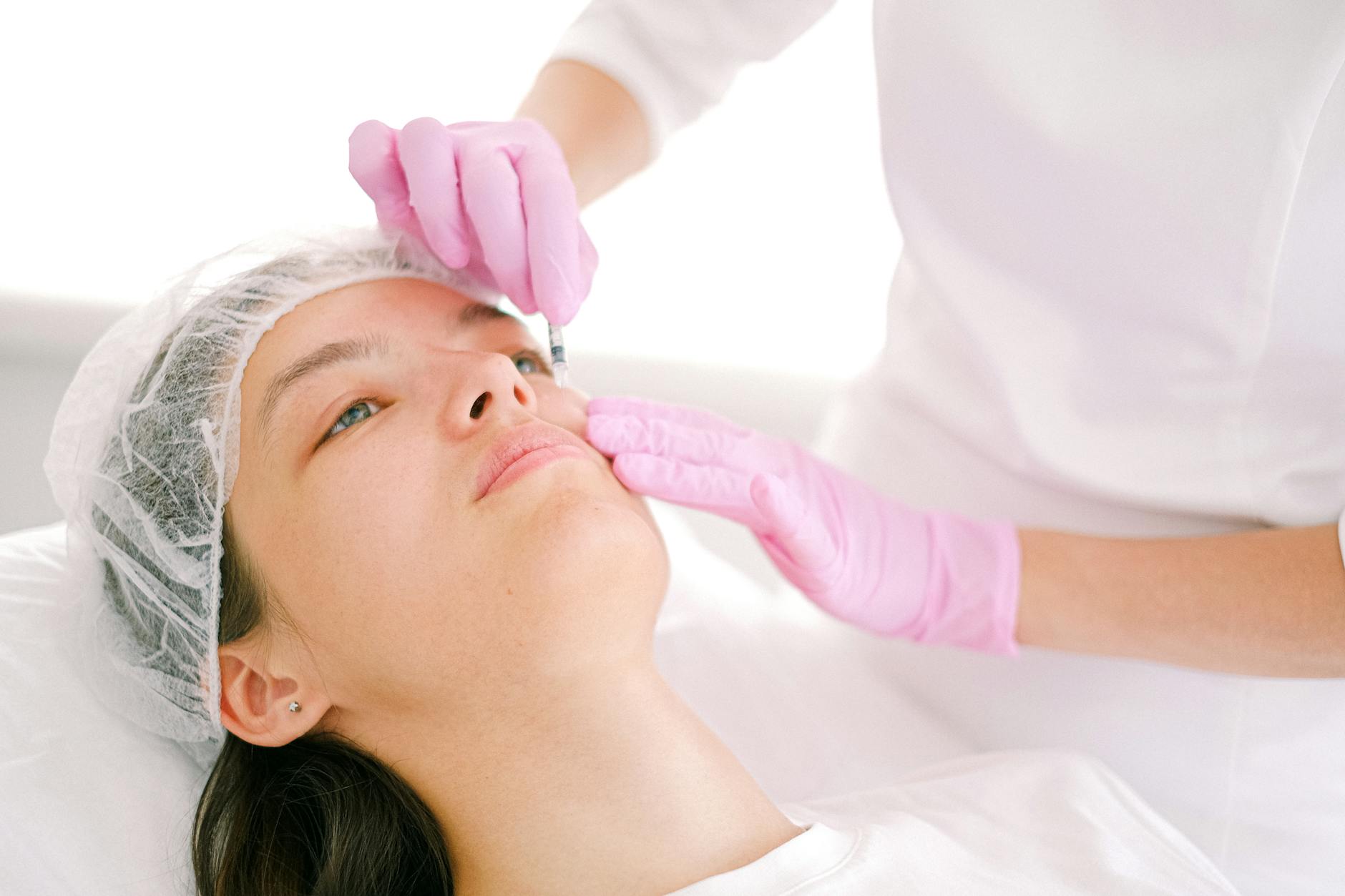Body Image Under Pressure: Navigating the Return of “Shrinking Girl Summer”
As weight-loss trends resurface, readers express concerns about societal pressures and the exclusion of diverse body types.
The cultural landscape surrounding body image appears to be undergoing a significant shift. Following a period that championed body positivity, a renewed emphasis on thinness, colloquially termed “shrinking girl summer,” is gaining traction, particularly fueled by the pervasive influence of social media and the proliferation of weight-loss drugs. This evolution has sparked concern and reflection among many, with readers expressing a sense of regression and a return to societal pressures that can alienate those who do not conform to narrow beauty standards.
A recent article, “I thought we’d entered the age of body positivity. Then came ‘shrinking girl summer’ – is everyone getting smaller except me?” by Rose Stokes, published on August 10th, 2025, highlighted this phenomenon, prompting a wave of responses that underscore the complex and often challenging relationship individuals have with their bodies in the digital age.
Context & Background: From Body Positivity to “Shrinking Girl Summer”
The concept of body positivity emerged as a powerful counter-movement against decades of enforced beauty ideals that often promoted unattainable thinness. It advocated for the acceptance and celebration of all body types, regardless of size, shape, color, gender, or physical ability. This inclusive approach resonated with many, fostering a sense of belonging and self-worth for individuals who had historically felt marginalized by mainstream media and fashion industries. The rise of social media platforms played a crucial role in amplifying these messages, creating online communities where diverse bodies were shared and celebrated.
However, recent trends suggest a potential backlash or a shift away from this more inclusive ethos. The resurgence of “shrinking girl summer” on social media platforms reflects a renewed focus on weight loss and a return to aesthetic ideals centered on extreme thinness. This trend appears to be amplified by the widespread availability and promotion of weight-loss medications, often discussed and showcased with alarming casualness on platforms like TikTok and Instagram. This has led to concerns that the progress made in promoting body acceptance is being undermined, creating a new set of pressures for individuals, particularly women, to attain a specific, often unrealistic, body type.
The Guardian’s article by Rose Stokes captures this sentiment, with one reader, who wishes to remain anonymous, expressing profound sadness and then anger in response. “Once again, a healthy, intelligent woman is made to feel not good enough by society because she is larger than a size 10,” the reader states, articulating a common frustration with the enduring societal judgment of larger bodies. This reaction highlights the ongoing struggle for many to reconcile their self-worth with societal beauty standards that appear to be reverting to older, more restrictive norms.
In-Depth Analysis: The Societal and Psychological Impact
The re-emergence of “shrinking girl summer” and the associated emphasis on thinness carries significant societal and psychological implications. For individuals who have worked hard to embrace body positivity and self-acceptance, this trend can feel like a betrayal and a disheartening regression. The constant barrage of curated images and narratives promoting extreme thinness can lead to feelings of inadequacy, self-doubt, and even body dysmorphia.
The role of social media in this phenomenon cannot be overstated. Algorithms often favor content that aligns with trending aesthetics, inadvertently amplifying messages of weight loss and thinness. Influencers, knowingly or unknowingly, contribute to this by showcasing their own weight-loss journeys or promoting diet products and medications. While some may view this as aspirational or informative, for many, it creates an environment of comparison and pressure.
The proliferation of weight-loss drugs, such as GLP-1 receptor agonists (e.g., Ozempic, Wegovy), has become a central theme in this discourse. While these medications have legitimate medical applications for individuals with type 2 diabetes and obesity, their off-label use for cosmetic weight loss has exploded, often without proper medical supervision. This has led to a normalization of rapid weight loss, further exacerbating the societal pressure to achieve a thin physique.
One of the most poignant responses to the Guardian article comes from a reader who lives with a rare physical disability. This individual’s perspective offers a critical lens on the narrow focus of current body image trends. “I was born with a rare physical disability and have spent years coming to terms with the way my body is,” they share. “I look disabled, I have scars from operations and a spinal curve surgeons couldn’t straighten, and I use mobility aids.” This deeply personal account emphasizes that the conversation around body image often excludes individuals with visible differences and disabilities, whose bodies may not conform to any conventional notion of “health” or “attractiveness” dictated by the mainstream.
The reader’s sentiment towards Rose Stokes, the author of the original article, is particularly telling. “To me, Stokes presents as an attractive, successful, healthy woman who is non-disabled (although this is her private business) with the good fortune to have two children. I wish Stokes and others could see themselves in that vein.” This statement, far from being a critique of Stokes herself, is a lament about how even seemingly “acceptable” bodies can still feel pressured to conform to ever-shifting ideals. It highlights the pervasive nature of societal judgment and the difficulty many women face in feeling truly “good enough.”
The struggle for self-acceptance is a long and arduous journey, as this reader acknowledges: “Granted, it took me years to be happy in my own skin and see the strengths of my body, everything I’ve been through and the pleasure it can give and receive, but it’s doable.” This powerful assertion underscores the resilience of the human spirit and the ultimate importance of internal validation over external societal pressures. However, the resurgence of trends like “shrinking girl summer” threatens to undo the progress many have made in this internal journey.
The selective omission of context is a common tactic in narrative manipulation, and in this context, it manifests as the downplaying of the potential health risks associated with unprescribed weight-loss medications and the erasure of diverse body types from the prevailing beauty narrative. The focus on thinness often overlooks the fact that healthy bodies come in all shapes and sizes, and that genuine well-being is not solely determined by the number on a scale.
Furthermore, the use of trigger words and polarizing talking points can be observed in online discussions surrounding these trends. Terms like “skincare,” “wellness,” and even “health” can be co-opted to promote restrictive diets and excessive exercise, creating a veneer of legitimacy for potentially harmful behaviors. This makes it challenging for individuals to discern genuine health advice from trends that prioritize aesthetic conformity.
Pros and Cons: A Balanced Examination
While the “shrinking girl summer” trend is predominantly viewed with concern, a balanced examination requires acknowledging any potential perceived benefits, alongside the significant drawbacks.
Potential Perceived Pros:
- Individual Agency in Health Choices: For some individuals, a renewed focus on weight management might be a personal choice driven by a desire to improve certain health markers or achieve personal fitness goals. When undertaken with proper medical guidance, weight management can have positive health outcomes.
- Inspiration for Personal Goals: Social media trends, even those with problematic undertones, can sometimes inspire individuals to adopt healthier lifestyles, such as increasing physical activity or making more mindful dietary choices.
- Openness About Weight Management: The widespread discussion of weight-loss medications, while controversial, has also opened up conversations about obesity as a medical condition and the potential role of pharmacological interventions.
Significant Cons:
- Reinforcement of Unrealistic Beauty Standards: The dominant narrative of extreme thinness can alienate and devalue individuals whose bodies do not conform to this ideal, leading to decreased self-esteem and body image issues.
- Promotion of Unhealthy Weight-Loss Practices: The trend often encourages rapid and unsustainable weight loss, potentially leading to disordered eating patterns, nutrient deficiencies, and adverse health consequences.
- Risks Associated with Weight-Loss Medications: The off-label and often unmonitored use of weight-loss drugs can lead to serious side effects, including gastrointestinal issues, pancreatitis, and mental health changes. Medical professionals emphasize the importance of consulting a doctor before using these medications. FDA Consumer Update on GLP-1 Receptor Agonists
- Exclusion of Diverse Bodies: The focus on thinness inherently marginalizes and excludes individuals with disabilities, larger bodies, and other diverse physical characteristics, undermining the principles of inclusivity championed by body positivity.
- Psychological Impact: Constant exposure to idealized thin bodies can contribute to anxiety, depression, and body dysmorphia, particularly among vulnerable populations like adolescents.
- Commercialization of Health: The trend can be heavily influenced by marketing and commercial interests, pushing products and services that may not be in an individual’s best interest from a health perspective.
Key Takeaways
- The “shrinking girl summer” trend signifies a cultural shift away from the widespread embrace of body positivity towards a renewed emphasis on thinness, significantly influenced by social media and weight-loss medications.
- Readers express dismay at this perceived regression, highlighting the persistent societal pressure for women to conform to narrow beauty standards and the emotional toll this takes.
- Individuals living with disabilities offer a critical perspective, pointing out how such trends often overlook and exclude those with visible differences, whose bodies challenge conventional notions of attractiveness.
- The proliferation of weight-loss drugs for cosmetic purposes raises concerns about health risks and the normalization of rapid weight loss without proper medical supervision.
- The trend can foster a culture of comparison, inadequacy, and potentially lead to disordered eating and negative body image.
- A balanced perspective acknowledges individual agency in health choices but strongly cautions against the uncritical adoption of trends that promote unhealthy ideals and exclude diverse body types.
Future Outlook: Towards Sustainable Inclusivity
The future trajectory of body image trends remains a subject of ongoing observation. Whether the current emphasis on thinness represents a fleeting trend or a more enduring shift away from body positivity is yet to be determined. However, the strong reactions to the “shrinking girl summer” phenomenon suggest a continued desire for inclusivity and self-acceptance among a significant portion of the population.
Moving forward, there is a clear need for a more nuanced and responsible discourse surrounding body image, health, and wellness. This includes promoting critical media literacy to help individuals navigate the often-curated and idealized content on social media. Furthermore, a concerted effort is required from social media platforms, brands, and media outlets to champion diversity and representation, showcasing a wider spectrum of bodies and promoting messages that prioritize health and well-being over conformity to a singular aesthetic.
The medical community also plays a crucial role in addressing the misuse of weight-loss medications. Clearer guidelines, increased public awareness about the risks of off-label use, and a focus on holistic health approaches are essential. The conversation must shift from simply achieving a certain size to fostering a sustainable and healthy relationship with one’s body, encompassing mental, emotional, and physical well-being.
The progress made by the body positivity movement in challenging restrictive beauty standards should not be undermined. Instead, the focus should be on building upon these foundations to create a more equitable and accepting environment where all individuals feel seen, valued, and empowered, regardless of their physical appearance or abilities. Organizations like the National Eating Disorders Association continue to provide resources and advocacy for those affected by disordered eating and body image issues, highlighting the ongoing societal need for support and education.
Call to Action
In navigating the complex currents of body image and societal expectations, individuals are encouraged to engage in mindful self-reflection and critical consumption of media. It is vital to:
- Prioritize Self-Acceptance: Cultivate a practice of self-compassion and recognize that your worth is not tied to your appearance or adherence to fleeting trends.
- Seek Diverse Sources of Inspiration: Follow accounts and engage with content that celebrates a wide range of body types, abilities, and lived experiences.
- Be Wary of Social Media Trends: Approach viral trends, especially those related to weight loss or extreme diets, with skepticism. Always consult with qualified healthcare professionals before making significant changes to your diet or exercise regimen.
- Educate Yourself on Health and Wellness: Seek information from reputable sources, focusing on holistic health that encompasses mental, emotional, and physical well-being, rather than solely on aesthetic goals. The World Health Organization (WHO) offers extensive resources on healthy weight management and obesity.
- Challenge Narrow Beauty Standards: Speak out against harmful narratives and advocate for greater inclusivity and diversity in media and public discourse.
- Support Those Affected: Offer a supportive presence to friends and family who may be struggling with body image issues or disordered eating. Resources like the Beauty Council aim to promote healthier conversations around beauty and self-esteem.
By fostering a culture of critical awareness, self-acceptance, and inclusive representation, we can collectively push back against harmful trends and build a more supportive environment for all bodies.









